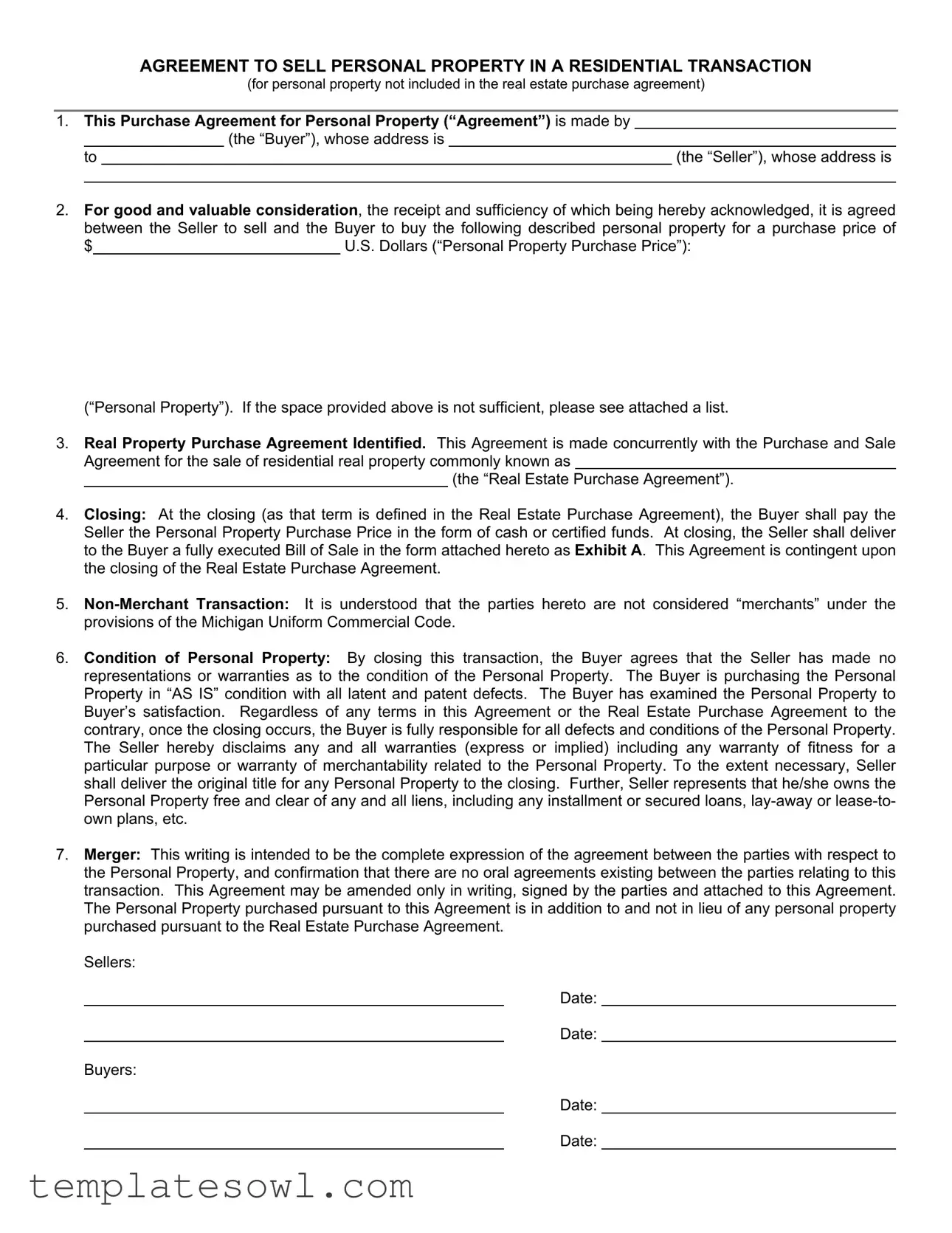AGREEMENT TO SELL PERSONAL PROPERTY IN A RESIDENTIAL TRANSACTION
(for personal property not included in the real estate purchase agreement)
1.This Purchase Agreement for Personal Property (“Agreement”) is made by
|
(the “Buyer”), whose address is |
to |
(the “Seller”), whose address is |
2.For good and valuable consideration, the receipt and sufficiency of which being hereby acknowledged, it is agreed between the Seller to sell and the Buyer to buy the following described personal property for a purchase price of
$ |
|
U.S. Dollars (“Personal Property Purchase Price”): |
(“Personal Property”). If the space provided above is not sufficient, please see attached a list.
3. Real Property Purchase Agreement Identified. This Agreement is made concurrently with the Purchase and Sale Agreement for the sale of residential real property commonly known as
(the “Real Estate Purchase Agreement”).
4.Closing: At the closing (as that term is defined in the Real Estate Purchase Agreement), the Buyer shall pay the Seller the Personal Property Purchase Price in the form of cash or certified funds. At closing, the Seller shall deliver to the Buyer a fully executed Bill of Sale in the form attached hereto as Exhibit A. This Agreement is contingent upon the closing of the Real Estate Purchase Agreement.
5.Non-Merchant Transaction: It is understood that the parties hereto are not considered “merchants” under the provisions of the Michigan Uniform Commercial Code.
6.Condition of Personal Property: By closing this transaction, the Buyer agrees that the Seller has made no representations or warranties as to the condition of the Personal Property. The Buyer is purchasing the Personal Property in “AS IS” condition with all latent and patent defects. The Buyer has examined the Personal Property to Buyer’s satisfaction. Regardless of any terms in this Agreement or the Real Estate Purchase Agreement to the contrary, once the closing occurs, the Buyer is fully responsible for all defects and conditions of the Personal Property. The Seller hereby disclaims any and all warranties (express or implied) including any warranty of fitness for a particular purpose or warranty of merchantability related to the Personal Property. To the extent necessary, Seller shall deliver the original title for any Personal Property to the closing. Further, Seller represents that he/she owns the Personal Property free and clear of any and all liens, including any installment or secured loans, lay-away or lease-to- own plans, etc.
7.Merger: This writing is intended to be the complete expression of the agreement between the parties with respect to the Personal Property, and confirmation that there are no oral agreements existing between the parties relating to this transaction. This Agreement may be amended only in writing, signed by the parties and attached to this Agreement. The Personal Property purchased pursuant to this Agreement is in addition to and not in lieu of any personal property purchased pursuant to the Real Estate Purchase Agreement.
Sellers:
Date:
Date:
Buyers:
Date:
Date:

